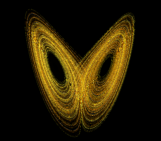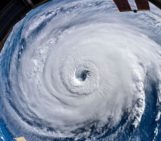The NPG paper of the month of July was awarded to Comparing estimation techniques for temporal scaling in palaeoclimate time series by Raphaël Hébert, Kira Rehfeld and Thomas Laepple (https://doi.org/10.5194/npg-28-311-2021). Raphaël Hébert is currently a post-doctoral researcher at the Alfred-Wegener-Institut in Potsdam (Germany) in the Earth System Diagnostics group of Thomas Laepple, where he also completed his PhD with the University of Potsdam (2021). His research focus is the characterization of the spatio-temporal structure of variability using paleoclimate data, in particular through large scale analysis of palynological records. He previously obtained a bachelor in Physics and Mathematics (2014) and a master in Physics (2017) at McGill University (Quebec) under the supervision of Shaun Lovejoy. Raphaël has been involved since 2020 in leading the second phase of the PAGES working Climate Variability Across Scales (CVAS).
Spectral characterization of atmospheric variability has led to the discovery of temporal scaling regimes extending from minutes to millions of years. Instrumental data has allowed us to characterize well the scaling regimes up to decadal timescales, showing a steep non-stationary turbulent regime up to weekly timescales in many atmospheric fields, then transitioning at longer timescales to a rather flat regime first termed the local spectral plateau. This description from steep to flat regimes corresponds to the so-called Hasselman model by this year’s eponymous Nobel laureate. More recently the turbulent regime and spectral plateau were termed weather and macroweather regimes by Lovejoy and Schertzer, and found to have spatially varying scaling exponents. The temporal scaling characteristics of a stochastic process is an indication of its autocorrelation, or memory, and informs us about the underlying dynamics.
The structure of climate variability at longer timescales is still subject of debate, and it is still unclear whether another transition into a non-stationary regime happens due to internal dynamics, and at which timescales. The classical view held that climate variability could be described as a sum of oscillatory processes driven by the Milankovitch orbital forcing and a relatively white background noise. However, spectral analysis of paleoclimate archives over long timescales have invariably shown a scaling background continuum of variability. This implies the existence of nonlinear mechanisms able to redistribute the sharply peaked orbital forcing to other timescales.
The nature of paleoclimate archives poses challenges to spectral analysis as the data are often of irregular resolution. To apply spectral methods which assume regular sampling, it is thus generally necessary to use interpolation in order to regularize the data. Interpolation acts as a filter in the Fourier domain and can significantly bias estimates of scaling exponents. There are interpolation-free alternatives such as the Lomb-Scargle periodogram which can be calculated for arbitrary sampling times.
In this paper, we evaluated the precision and accuracy of three methods to estimate the scaling exponent of irregular surrogate data mimicking paleoclimate archives: the multitaper spectrum with linear interpolation, the Lomb-Scargle periodogram, and the first-order Haar structure function. The latter is a wavelet-based method performed in real space which can be easily adapted to take in irregular data due to the simplicity of the Haar Wavelet. While all methods performed similarly for regular data of stationary timeseries, the interpolation-free methods allowed more accurate estimates for irregular timeseries by utilizing the shorter timescales which were otherwise biased by interpolation. The Lomb-Scargle periodogram however was found unsuitable for non-stationary timeseries and is thus unsuitable to detect the presence of a non-stationary low-frequency regime. The Haar structure function was relatively robust to irregularity and over a wide range of scaling exponents, and is thus a safe choice for the analysis of irregular geophysical timeseries.




